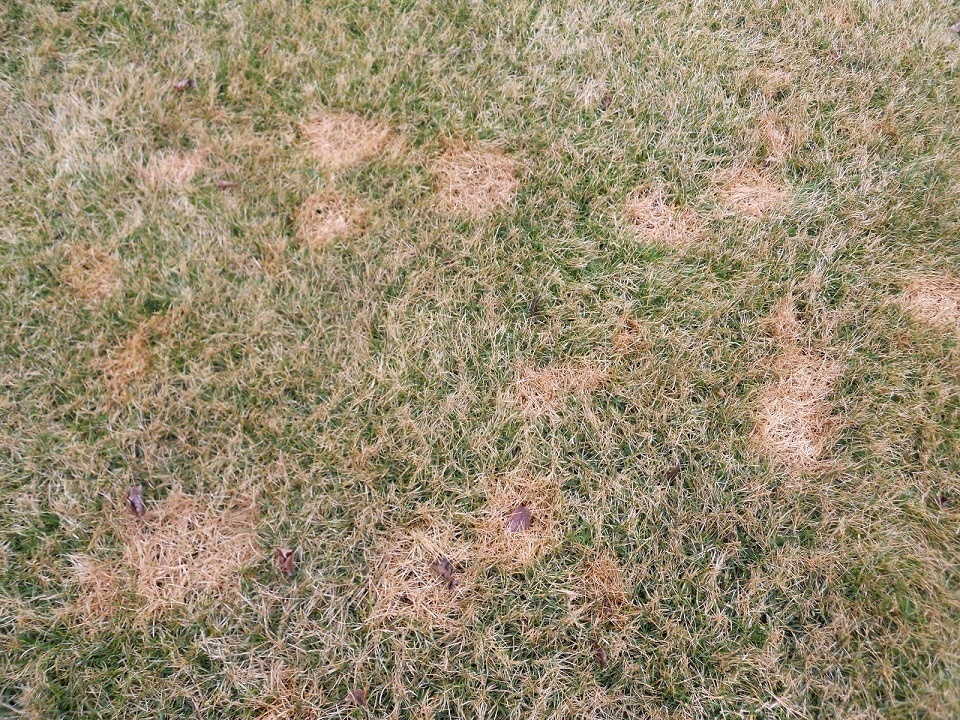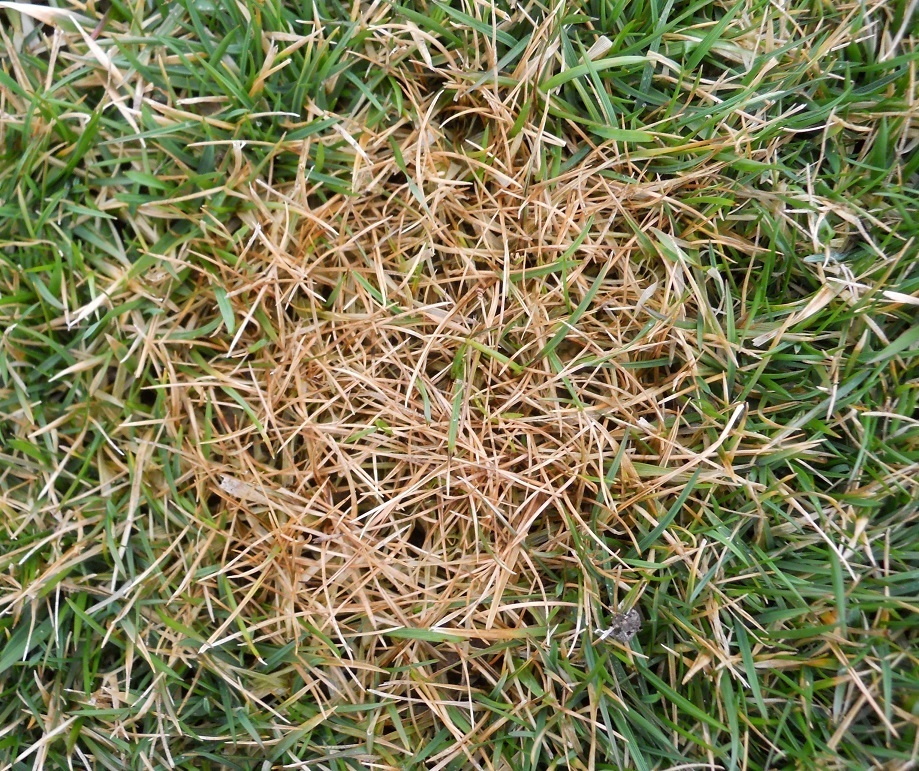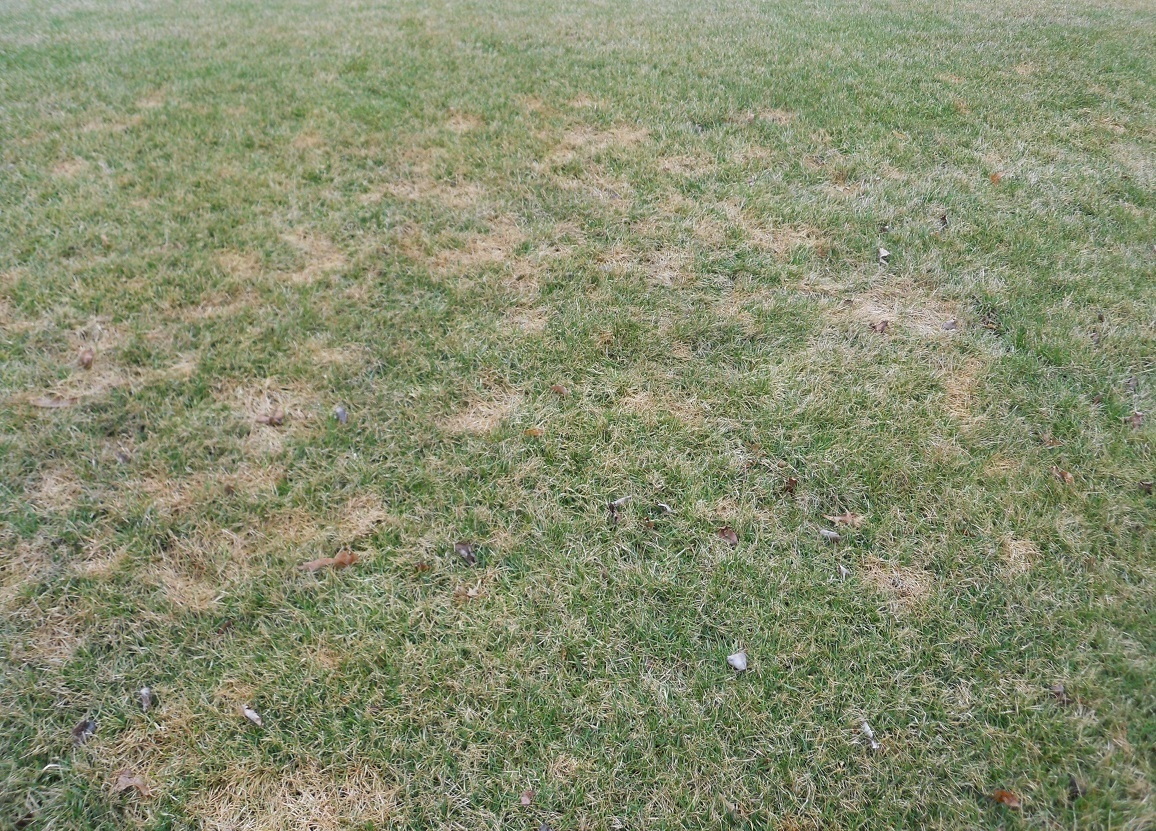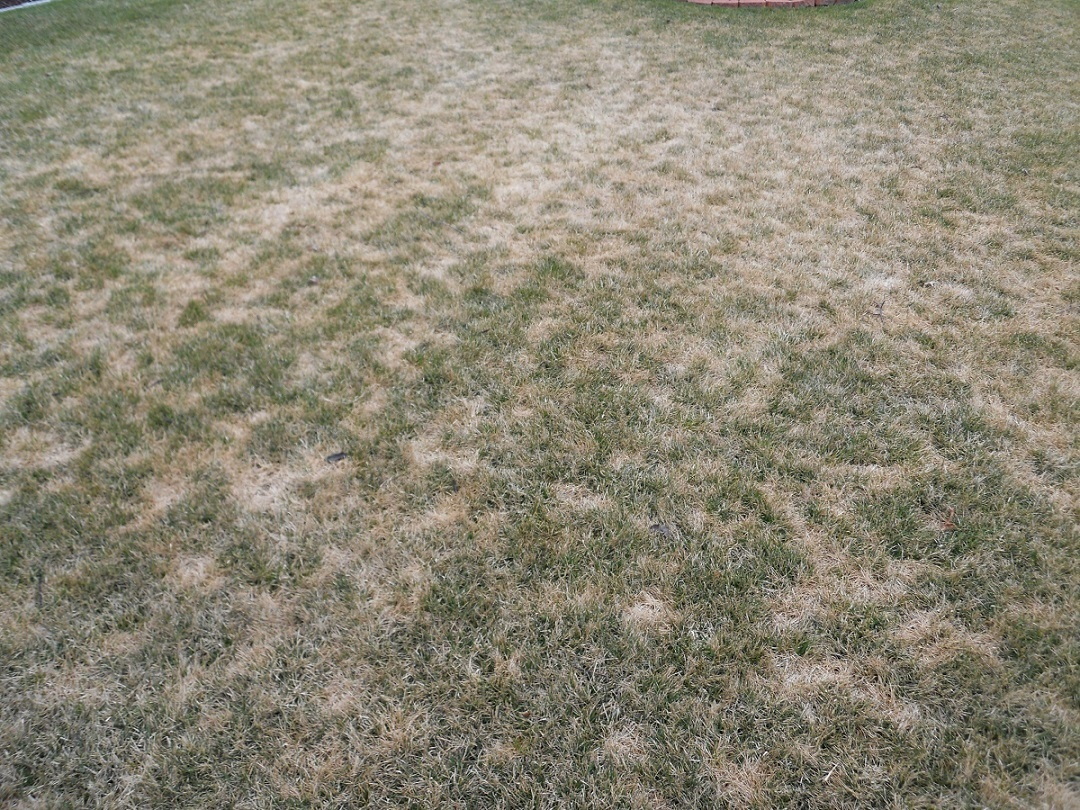There is no shortage of fungi capable of damaging turf during cold periods between late autumn and spring. The two most prominent late winter diseases of lawns are pink snow mold (aka Microdochium patch) and gray snow mold (aka Typhula blight).
With the advent of snow melt in late March, two of our tall fescue lawns (that we know about) developed pink snow mold. Gray snow mold is more common, but we have not seen this disease in any of our lawns thus far. Weather conditions were most conducive for snow mold this past winter. We did not see much snow until February, and most of us experienced 3 or 4 snow events in the range 4-8”. Snow cover persisted for long periods due to extremely cold temperatures and just when the sun had melted most of the snow another storm came along. We continued to have a few wet snows in mid-to-late March and snow showers in early April. Long periods of snow cover generally are required for these diseases to develop in lawns.

Snow protects dormant turfgrass plants from desiccation and frost, but also provides a microenvironment conducive to the development of some low temperature tolerant, pathogenic fungi. The most favorable microenvironment is provided by the insulation effect of snow, especially when snow falls on unfrozen ground. Snow mold fungi are remarkable because they are active at temperatures slightly above freezing. Snow molds are damaging when turf growth has been retarded by low temperatures, thus plants are unable to resist infection. In general, these diseases develop under snow cover, but become most aggressive at snow melt when there is an abundance of surface water.

Following snow melt, pink snow mold became apparent in the form of circular spots or patches 2” to 6” in diameter. Initial infection centers are 1-2” in diameter and have a reddish-brown or bronze color and can be confused with dog urine injury. Older patches are tan to grayish and may or may not have a fringe of red, pink or bronze-colored leaves at the periphery of the patch. Patches can be numerous and eventually coalesce causing large areas to become blighted. Leaves are severely blights, but if you strip all of the dead leaves and sheaths from plants you will find that most retain some green tissues. Above ground portions of plants eventually collapse and blighted leaves have a tan or white color. The disease seldom kills large numbers of plants, but it can kill immature plants in recently established lawns (i.e., less than one year old) and close cut turf grown on golf courses.

Homeowners invariably ask why they have the problem when their neighbors do not. This begs the question of whether there is something in our program that has caused the problem. The answer is highly unlikely, because if it were so most of our lawns (we service about 1600 lawns), instead of a very few, would be affected similarly. The most likely reason is plant genetics. There literally are hundreds of different varieties of tall fescue. Some of these varieties are simply more susceptible to certain diseases. Highly susceptible varieties develop the disease earlier and blighting is more rapid and severe, when compared to a resistant variety.

Once blighting appears, fungicides will provide little or no benefit. Furthermore, the lawn is very likely to make a full recovery in time. As soon as possible, it is helpful to rake blighted areas to break-up matted leaves and to promote drying. Removal of the blighted debris also will improve the appearance of the lawn. Apply a water soluble nitrogen fertilizer such as ammonium sulfate or urea (about 0.5 lb. N/1000 ft2) to stimulate growth and thus promote recovery of turf. A high canopy would be expected to favor the development of snow molds. Thus, next autumn continue to mow the lawn as long as leaves are growing and slightly reduce height of cut to avoid a high canopy prior to winter dormancy (usually around Thanksgiving on Delmarva).
